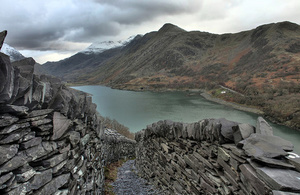The area – which runs throughout the county of Gwynedd – is said to have “roofed the 19th century world” as slate from its mines was exported around the globe.
The landscape was assessed for World Heritage Status by a UK panel of experts this summer and it will be formally presented to UNESCO next year.
The site was the world’s greatest exporter of slate during the mid 19th century, becoming a key part of the social and economic fabric of North Wales.
The slate mined from the area also had a significant impact on global architecture with its materials used on a vast range of buildings, from terraces to palaces all around the world.
If inscribed it would be the fourth World Heritage Site in Wales, alongside the Blaenavon Industrial Landscape, the Castles and Town Walls of King Edward at Gwynedd and the Pontcysyllte Aqueduct.
The UK currently has 31 other World Heritage sites and can nominate one site per calendar year.
Jodrell Bank Observatory was nominated in January 2018, and has recently undergone an evaluation mission by UNESCO’s expert advisers. A decision on inscription for that site will take place during the annual committee meeting next summer.







